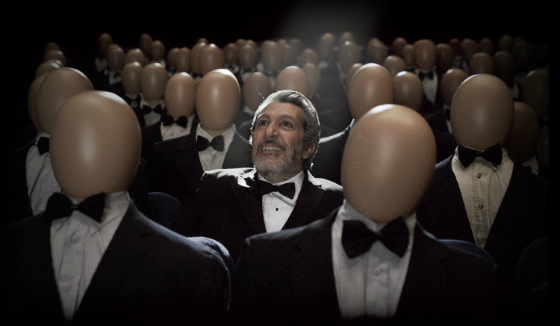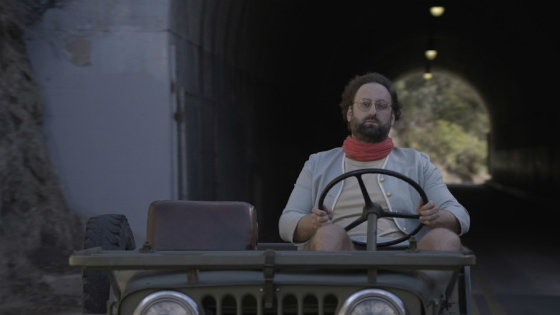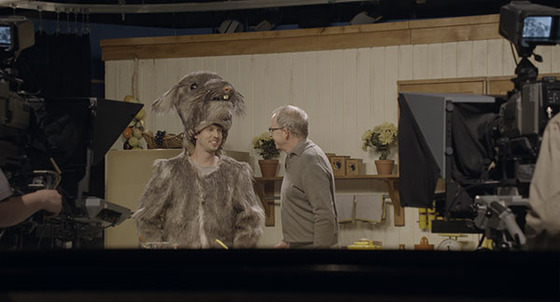TR Review: Reality Used to Be a Friend of Mine
 |
When a French director who made a name for himself with a movie about a murderous tire proceeds to make a movie about a French director whose next film might be a movie about murderous TV sets, it’s hard not to imagine there’s something autobiographical to it. But if that’s the case, Quentin Dupieux’s Reality may be the most dispassionate autobiography I’ve ever seen.
Plenty weird still, don’t worry. But dispassionate.
As with Rubber and Wrong, Dupieux takes a surreal narrative and loops it back on itself, but at its heart – or so it initially seems – is a young girl actually named Reality (The Walking Dead‘s Mika, Kyla Kenedy), who is startled one day when her taxidermist father disembowels a hog, and a blue VHS videotape falls out. One which nobody but she can see.
This could be because she’s a character in a movie – but it isn’t clear if said movie is a documentary or a drama, only that it’s directed by an eccentric, Kubrickian genius named Zog (the ever-delightful John Glover), who is trying the patience of his producer (Jonathan Lambert). Also pitching to that producer is the man who essentially becomes our main character, Jason Tantra (Alain Chabat), who wants to make a film called Waves, in which radio waves from TV sets make people gush blood until they die. The producer agrees to the pitch – in spite of its inanity and the fact that it mostly consists of stick figures drawn on a notepad – so long as Jason can present to him the perfect death-moan sound in the next couple of days.
Jason’s day job is as cameraman on a bizarrely bad cooking show that stars Jon Heder’s Denis in a hideous rodent costume. Denis insists he has an infernally itchy skin rash despite no apparent symptoms, and later insists that he and Jason are actually the same person. Denis’ path crosses Reality’s at one point, as she has a run-in with a strange high-school principal (Eric Wareheim) who may or may not be a cross-dresser. And when we finally see what’s on the blue videotape, the entire narrative turns into a metaphorical Auryn, the snake eating its tail while telling you to do as you wish. That Tim and Eric feel a kinship with Dupieux is no surprise.
 |
After I saw Dupieux’s Wrong, I wondered how long he could pull off his whimsical surrealist style without getting tiresome, and Reality provides something of an answer. It’s not that the strangeness is any less appealing, but that there’s no more urgency to it – Rubber had a killer tire on the loose, and Wrong had a lost dog, both of which would be sources of tension in any reality. Reality lacks that level of drama, as we simply don’t care if Jason gets his movie approved or not, since it was such a half-assed idea to begin with. This may or may not reflect the fact that Dupieux is already a successful musician under the name of Mr. Oizo, and doesn’t HAVE to make movies for either a living or a creative outlet.
 |
What the movie does achieve is a replication of the peculiar nature of some dreams – the kind where you’re two people at once, or go from being protagonist to omnipotent spectator, or find yourself close to your heart’s desire yet arbitrarily unable to grasp it. They’re dreams you might have while undergoing writer’s block – but Writer’s Block: the Movie isn’t really something many people want to see.
Points, though, for repurposing the Mighty Morphin Power Rangers Command Center exterior as an insane asylum.
